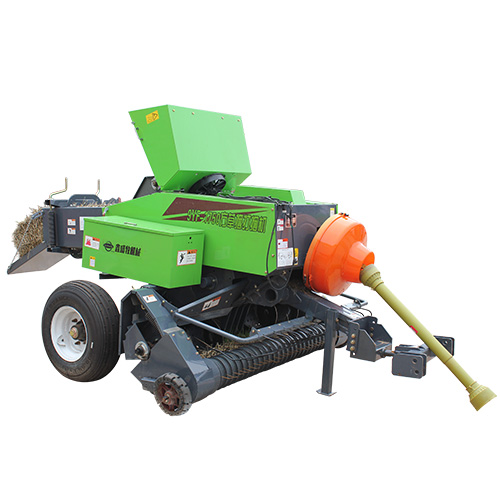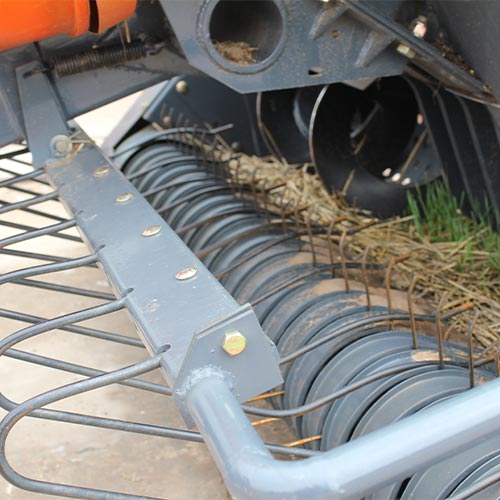Introduction
Agricultural harvesting is a complex process that involves a variety of machinery, each designed to perform specific tasks. Among these machines, the square baler stands out as a crucial piece of equipment for transforming crop residues into compact, easy-to-handle bales. This blog post will explore the role of square balers in modern agriculture, their operation, benefits, and the different types available.
What is a Square Baler?

A square baler is a machine used in the agricultural industry to compress crop material—such as hay, straw, or silage—into compact, square-shaped bales. These bales are not only easier to handle and transport but also facilitate better storage and help preserve the quality of the crop over time.
Key Features of Square Balers
- Compact Bales: Produces square bales that are uniform in size and shape.
- Efficiency: Designed to work quickly, reducing the time spent on baling.
- Versatility: Can handle various types of crop material.
- Ease of Use: Many models are equipped with user-friendly controls.
Types of Square Balers
There are several types of square balers, each with its own set of features and capabilities. Understanding the differences can help farmers choose the right baler for their specific needs.
Fixed Chamber Square Baler
- Description: The chamber size is fixed, and the bales are formed by compressing the material and then tying them with twine or netting.
- Best for: Small to medium-sized farms with a single type of crop.
Variable Chamber Square Baler
- Description: The chamber size can be adjusted to accommodate different types and amounts of crop material.
- Best for: Large farms or those with diverse crops.
High-Density Square Baler
- Description: Designed to compress the material to a higher density, reducing the volume of each bale and making them easier to transport and store.
- Best for: Farms that need to minimize storage space or transport bales long distances.
Benefits of Using Square Balers
Square balers offer numerous benefits that make them an essential tool in agricultural harvesting.
Improved Efficiency
The use of square balers can significantly reduce the time and labor required for baling, leading to increased efficiency in the harvesting process.
Better Storage
Square bales are easier to stack and store, taking up less space than their round counterparts.
Enhanced Preservation
The compact nature of square bales helps to preserve the quality of the crop by reducing exposure to air and moisture.
Versatility
Square balers can handle a wide range of crop materials, making them a versatile addition to any farm.
Comparison Table: Square Balers vs. Round Balers
| Feature | Square Baler | Round Baler |
|---|---|---|
| Bale Shape | Square | Round |
| Density | Variable, often higher | Lower |
| Storage Efficiency | High | Moderate |
| Handling | Easy, uniform size | Moderate, size varies |
| Preservation | Good, compact | Fair, less compact |
| Versatility | High | High |
| Suitable for Transport | Excellent | Good |
Factors to Consider When Choosing a Square Baler

When selecting a square baler, several factors should be taken into account to ensure it meets the specific needs of the farm.
Crop Type and Volume
The type and volume of the crop will determine the capacity and density requirements of the baler.
Farm Size
The size of the farm and the scale of operation can influence the choice between a fixed or variable chamber baler.
Budget
The cost of the baler should be considered within the overall budget for agricultural machinery.
Operator Comfort and Training
The baler should have user-friendly controls, and operators should be adequately trained for safe and efficient use.
Conclusion
Square balers play a vital role in agricultural harvesting by providing an efficient, versatile, and effective solution for baling crop material. Their ability to produce compact, easy-to-handle bales that facilitate storage and preservation makes them an indispensable tool for farms of all sizes. By considering factors such as crop type, farm size, budget, and operator comfort, farmers can select the right square baler to enhance their harvesting operations.
FAQ
Q: What is the primary difference between a square baler and a round baler?
A: The primary difference is the shape of the bales they produce. Square balers create compact, uniform bales that are easier to store and transport.
Q: Are square balers suitable for all types of crop material?
A: Square balers are versatile and can handle various types of crop material, but the specific model and configuration should match the crop being baled.
Q: How do high-density square balers differ from standard ones?
A: High-density square balers compress the material to a higher density, resulting in smaller and heavier bales that are more suitable for long-distance transport and require less storage space.
Q: Can square balers be used for silage production?
A: Yes, certain models of square balers are designed to handle the specific requirements of silage production, including proper fermentation and preservation.
Q: What are some maintenance tips for square balers?
A: Regular cleaning, checking and replacing worn parts, lubricating moving parts, and ensuring that all components are functioning correctly are essential maintenance practices for square balers.

